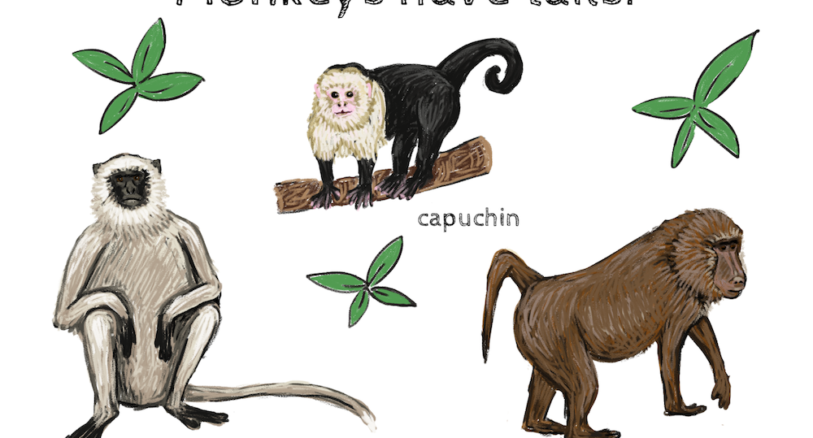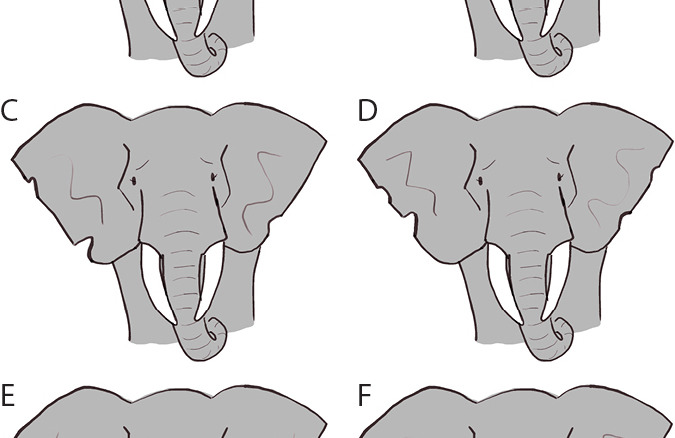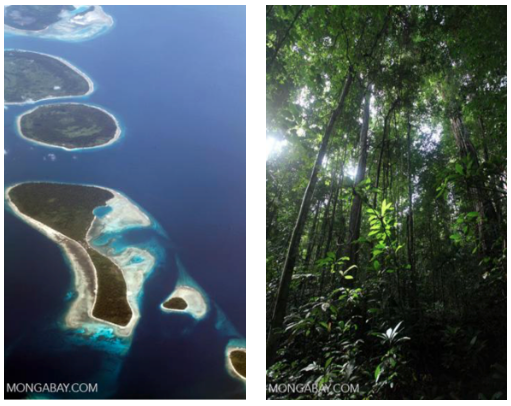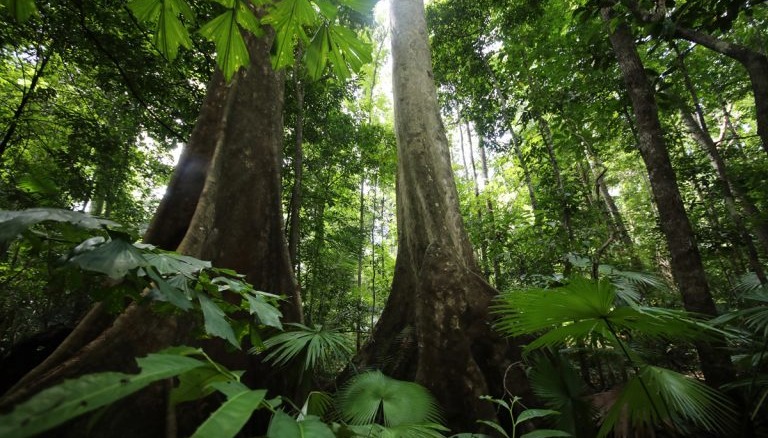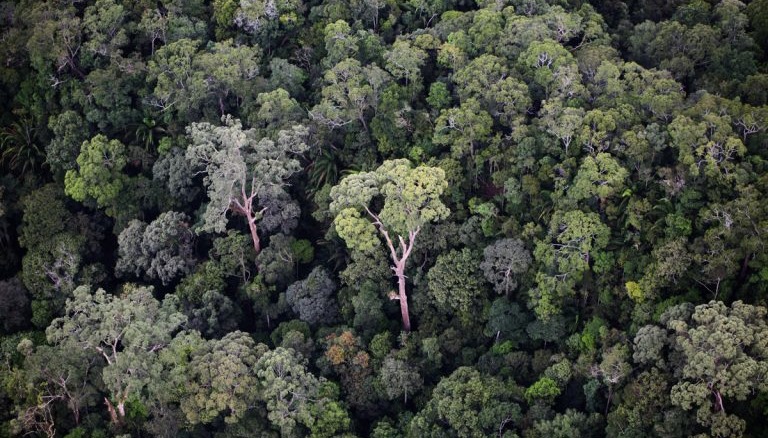By Lisa Algee
This article is part of a three-part series on oceans and coral reefs consisting of the following articles:
- Rainforests and coral reefs
- Ocean prognosis
- Coral reef solutions (this article)
Each has been taken from the Mongabay main site and adapted to meet 5th grade educational standards. Ideally, they are to be read in the above order.
Coral reef solutions

The world’s coral reefs are in trouble due to a variety of factors including:
- Ocean acidification
- Warming temperatures from climate change
- Overfishing
- Pollution
This has caused some marine biologists, like Charlie Veron, Former Chief Scientist of the Australian Institute of Marine Science, to predict that coral reefs will be largely gone within a century.
However a new paper in Trends in Ecology and Evolution tries to dispel the gloom over coral reefs by pointing to strategies to save them and even to some successes.
Scientists have been studying reefs for decades. That is good news. “We have a very good scientific understanding of what causes reefs to decline—what we now need is a clearer picture of how to help them…” says lead author Terry Hughes from the Australian Research Council Centre of Excellence for Coral Reef Studies at James Cook University.
Research has shown that coral reefs are resilient and even capable of recovering from large-scale devastating events.
The authors write that “reef crests on Heron Island on the Great Barrier Reef routinely lose almost all of their coral cover every decade or so because of cyclones; yet, they have retained their ability to recover quickly…

However, human impacts are different from natural ones, such as cyclones. Coral reefs are no longer facing down just one disaster that hits and then passes. Human impacts happen every year or all year.
Hughes says, “The key to saving the reefs lies in understanding why some reefs degenerate into a mass of weeds and never recover while on other reefs the corals manage to bounce back successfully, showing a quality known as resilience.”
The researchers point to a number of places where coral reefs are returning and suggest factors that are allowing them to recover, for example:
- Ending sewage discharges in Kanehoe Bay in Hawaii has allowed coral to recover.
- Returning populations of sea urchins in parts of the Caribbean have allowed coral to rise against seaweed.
- In the Philippines better regulations on overfishing have allowed parrot fish to return.
For Hughes the message is not yet gloom-and-doom; instead he claims, “The world’s coral reefs can still be saved…if we try harder.”
Let’s take a look at some solutions, which are being tried.
Coral gardening

New research finds that “coral gardening” is playing a key role in the restoration of Staghorn coral reef systems in the Caribbean Ocean. Small fragments of endangered Staghorn corals are taken from threatened reefs. These fragments are grown in an ocean water nursery at the University of Miami (UM) and then replanted back in the wild ocean.
They found that current restoration methods do not cause excessive damage to donor colonies and that once the coral fragments are planted back out in the wild, they behave just like wild colonies of coral.
Researchers at the University of Miami collected data on the survival of these colonies within six different regions near Florida, Jamaica, Honduras, Dominican Republic and Puerto Rico.

According to UM coral biologist Stephanie Schopmeyer, lead author of the study, the world’s wild coral reef systems provide:
- habitat for fisheries;
- food for humans;
- food for numerous marine species; and
- help protect shorelines against hurricanes and other extreme weather.

“Our study showed that current restoration methods are very effective,” said Schopmeyer. “Healthy coral reefs are essential to our everyday life and successful coral restoration has been proven as a recovery tool for lost coastal resources.”
Fish for all?
The Fish-Free Feed Challenge, or cutting out the middle man
In a world that is that’s growing quickly to nine billion people, fish farming or aquaculture offers an efficient way to produce high-protein food for the hungry masses. But there’s a catch: Farmed fish have been fed fishmeal made from fish. While farmed fish are feeding the multitudes of people, there may not be enough small fish left in the oceans for other fish to eat. As the farming of fish, shrimp, and mollusks expands, the old adage about “plenty of fish in the sea” may no longer ring true.

Fish farming is growing at about 8 percent per year. About 20 percent of the world’s wild fish goes to aquaculture, depleting wild-caught forage fish such as anchovies and krill to provide oils and protein for the development and growth of farmed fish.
Kevin Fitzsimmons, an aquaculture expert and environmental sciences professor at the University of Arizona in Tucson says, “Nobody interviewed the whales and dolphins and seabirds as to whether they’re getting enough anchovies, menhaden and other forage fish.”
Let’s think about a food chain or food web. We know that plants get energy from the sun. Small animals and insects get their energy by eating those plants. Mid-sized animals eat the small animals and insects to get their share of the energy. Finally large animals, including humans, eat the mid-sized animals to get the same energy.

Suppose we can take out some of those middle steps and get energy from the plants directly to the larger animals. That would be more efficient.
The Fish-Free Feed (F3) Challenge was created to find a solution. Find a way to feed the fish on fish farms without using fish taken from the ocean. Eight teams from around the world were competing for a $200,000 (USD) prize, raised through crowd-funding and sponsorship from the Monterey Bay Aquarium, the New England Aquarium, the University of Arizona, and the World Bank. The team that sells the most feed by the end of the contest, on September 15, 2017, would be named the winner.

“There’s a lot of research going on out there, the problem is getting the word out in the industry and getting people to recognize that all kinds of ingredients:
- Single-cell proteins
- Algal extracts
- Insect meals
can be used instead of fish,” says Fitzsimmons, chair of the contest committee.

And the winner is… The Chinese feed giant Guangdong Evergreen Feed Industry Co. won the F3 Challenge in October of 2017. They made and sold almost 85,000 tons of fish feed made without using any marine animals. They were able to sell it cheaper than fish feed made with marine animals.
“We didn’t set this up to pick winners or losers,” says Fitzsimmons of the F3 challenge. “Having all these companies talking to each other and using a fish-free diet — that’s a success unto itself.”
What can you do?
It is time for all of us to make better decisions and choices. Where does our food come from? Is the fish on your plate from the ocean? Did it come from a fish farm? Does the fish farm use wild caught fish to feed the farm fish or does it use fish free meal?
You may have heard that eating lower on the food chain is better for our planet. For example, a serving of chicken is a more efficient way to get your protein than a serving of beef. Well the same is true of fish. Tilapia can produce the greatest amount of edible fish for the least amount of fish feed.
The oceans need seagrass
Indonesians plant trees to nurse seagrass back to health in Wakatobi

Seagrass, the “ugly duckling” of the conservation world, is a vital lifeline for thousands of communities around the globe and an efficient absorber of “blue carbon.” Unfortunately, it is also quickly disappearing. In Indonesia’s Wakatobi National Park, a community-focused tree-planting project is helping protect seagrass meadows and foster a new generation of environmentally aware children.

Secret Gardens of Life
Seagrass is an underwater flowering plant that grows along coasts. Without it we’d be in a pretty poor state. We now know, for instance, that some seagrass meadows naturally store large quantities of blue carbon – the carbon dioxide captured by the world’s oceans and coastal ecosystems – in their roots and soil, and could well soak up more climate change-inducing CO2 than rainforests.
In Indonesia 400 species of fish rely on seagrass. “Without seagrass we probably wouldn’t have coral reefs as we know them and they’d be much less beautiful for it,” said Benjamin Jones, a director of environmental charity Project Seagrass.
But seagrass beds aren’t just beautiful habitats; they have many other uses. They also:
- Stabilize coastlines.
- House fish.
- Provide ingredients for food, protein and medicine for humans.
- Clean coastal waters.
- Feed birds and land animals.
From River to Sea
“The list of threats to seagrass is long”, Jones said. Some of the main threats in Indonesia are:
- Small-scale coastal development
- Agricultural runoff
- Overfishing
- Coral and sand mining
- Oil pollution
- Sedimentation
The problem is that seagrass conservation doesn’t stop at the shoreline, said Angela Quiros, a University of California marine biologist. She found that land use is important to the conservation of seagrass. Swaths of seagrass are covered in microscopic algae that settles on seagrass leaves. Nutrients from the fertilizers used on land have allowed algae to grow. Overfishing of key fish species – which would usually eat the leaves with algae – has led to losses.

First, the researchers sought out opinions from the people living in Wakatobi. Sedimentation came back as the biggest concern. Years of turning forest into farmland had increased soil runoff into rivers smothering seagrass. On the island of Kaledupa in Wakatobi, communities started planting trees to save the soil and the seagrass.
The loss of both forest and coastal mangroves also affected water retention on the island, Jones said. Planting trees was thus a double winner. Over time, it was hoped the trees would limit sedimentation, rebuild water retention, protect seagrass and provide an additional source of income for farmers.
So far, around 4,500 trees have been planted along Kaledupa’s riverbanks.

Women in particular have been key in this campaign. Nusi, one of the local organizers, explained that unlike coral reefs, which are fished mainly by men, seagrass beds are open to all, and women frequently visit them during low tide to gather crabs, sea cucumbers or fish. “When we say it has an impact on their food, their income, their children and their future, it’s easy to make them care.”
Once the women are on board, they can begin to change the actions of their entire family, from the men who fish to their children who often accompany them. Likewise, the younger generations are receiving an education in seagrass since the local government agreed to include conservation issues in the school curriculum.
Nusi hopes that over time people across Indonesia’s thousands of islands will develop an understanding of the importance of seagrass, before it’s too late. “For a long time they just see it like a boundary between coral and mangroves,” she said. “It would be better if everyone in Indonesia can understand seagrass.”
Adapted from the following articles on mongabay.com
Jeremy Hance on 10 November 2010
Beyond gloom solutions to the global coral reef decline
Mike Gaworecki on 9 August 2017
Critcally endangered staghorn corals are benefiting from coral gardening in the Caribbean
Elizabeth Devitt on 10 January 2017
Fish for all? The fish-free fishmeal challenge
Sean Mowbray on 31 October 2017
Indonesians plant trees to nurse seagrass back to health in Wakatobi
Glossary
| Absorber (n.) | A thing that takes in or sucks up liquids or gases, like a sponge. |
| Adage (n.) | A saying or a proverb. |
| Aquaculture (n.) | The growing of water animals or plants in a controlled environment, underwater farming. |
| Deplete (v.) | Use up the supply. |
| Devastate (v.) | To destroy or ruin. |
| Dispel (v.) | To cause to vanish, alleviate. |
| Efficient (adj.) | Using with the least waste of resources or effort. |
| Expands (v.) | To increase in size, extent, scope etc. |
| Forage (n.) | Food. |
| Multitudes (n.) | A great number. |
| Numerous (adj.) | Very many. |
| Resilient (adj.) | Recovering from illness or damage. |
| Restoration (n.) | A return of something or someplace to its original condition. |
| Retention (n.) | The ability to keep in place. |
| Sedimentation (n.) | The matter or dirt that settles to the bottom of a liquid. |
| Swaths (n.) | A line or ridge of grass. |
Comprehension questions
1. Why do researchers say coral reefs are resilient? Give one example.
2. If coral reefs are resilient why are pollution and overfishing problems?
3. We can use science to protect the earth’s environment. Name the three methods used in this article to protect our oceans.
4. What is coral gardening?
5. What is fish free fishmeal?
6. The people in Wakatobi, Indonesia choose to plant trees on land to protect the seagrass. Why?
Standards
Grade 5
Next Generation Science Standards
- 5-ESS3-1 Earth and Human Activity
- Obtain and combine information about ways individual communities use science ideas to protect the Earth’s resources and environment.
- Disciplinary Core Idea ESS3.C. Human Impacts on Earth Systems
- Human activities in agriculture, industry and everyday life have had major effects on the land, vegetation, streams, ocean, air and even outer space. But individuals and communities are doing things to help protect Earth’s resources and environments (5-ESS3-1)
Common Core State Standards: English Language Arts
- Key Ideas and Details
- CCSS.ELA-LITERACY.RI.5.1
Quote accurately from a text when explaining what the text says explicitly and when drawing inferences from the text.
- CCSS.ELA.LITERACY.RI.5.2
Determine two or more main ideas of a text and explain how they are supported by key details; summarize the text.
- Craft and Structure:
- CCSS.ELA.LITERACY.RI.5.4
Determine the meaning of general academic and domain-specific words and phrases in a text relevant to a grade 5 topic or subject area
- Integration of Knowledge and Ideas:
- CCSS.ELA.LITERACY.RI.5.9
Integrate information from several texts on the same topic in order to write or speak about the subject knowledgeably
- Range of Reading and Level of Text Complexity
- CCSS.ELA-LITERACY.RI.5.10
By the end of the year, read and comprehend informational texts, including history/social studies, science, and technical texts, at the high end of the grades 4-5 text complexity band independently and proficiently. - Research to Build and Present Knowledge
- CCSS.ELA-LITERACY.W.5.7
Conduct short research projects that build knowledge about a topic.
Common Core State Standards: Mathematics
- Represent and interpret data
Credit: All content created by Lisa Algee. You can contact Lisa at algeelisa[at]gmail.com

